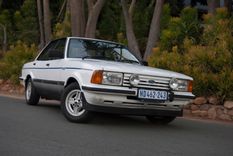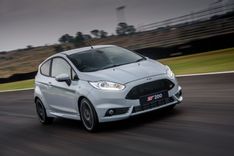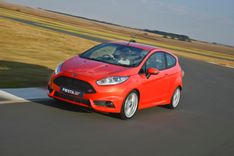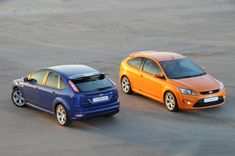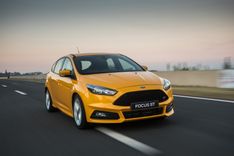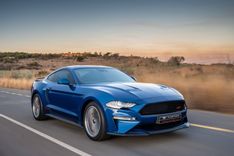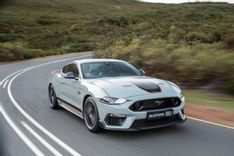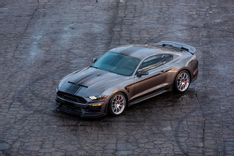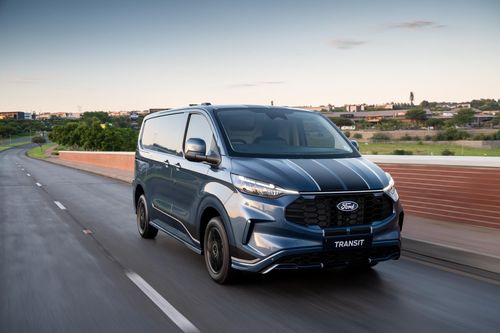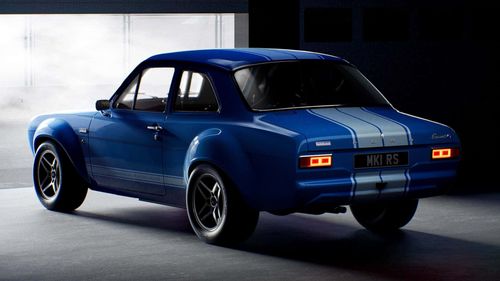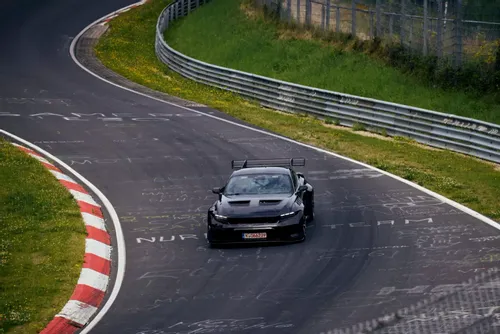Ford's Impact in Southern Africa: Classic Cars Over the Years
Pretoria, South Africa, October 25, 2023 – Ford South Africa has a rich history of crafting and introducing iconic cars tailored to the preferences of local enthusiasts throughout the decades. Many of these innovations were explicitly designed for the South African market, nurturing the Ford brand and its legacy on the country's roads and racecourses.
Ford boasts a storied presence in South Africa, marked by a legacy of staying attuned to local tastes and trends. This commitment to the South African market has led to numerous distinctive vehicles, some engineered to uphold Ford's esteemed "True Blue" status on local racetracks and others crafted to address unique needs within the local motoring scene.
One standout creation was the Ford Capri Perana in 1970. The late Basil Green is synonymous with the Ford Capri Perana and many other Ford models from the 1960s and '70s that graced South African roads and racetracks.
The Perana was a locally developed vehicle that aligned seamlessly with Ford's global "Total Performance" advertising campaign of that era. These road cars were officially available through Ford dealerships across the country.
The Capri Perana gained notable acclaim for its dominance in South Africa's Group 5 racing, especially during the 1970 season. Bobby Olthoff, piloting his Capri Perana V8 with Gunston livery and car number Z181, remarkably won 13 out of the 14 races that year.
What set the Capri Perana apart was its distinction as the sole Ford factory-endorsed Capri fitted with a V8 engine. The impressive 5.0-litre Windsor V8 from the Mustang ensured that it outperformed its rivals. CAR magazine tested one of these road cars, achieving an excellent 0 to 100 km/h acceleration time of 6.7 seconds. Buyers chose a four-speed manual and a three-speed automatic transmission, although collectors today typically favour the manual version over the automatic.
The Capri Perana could be identified by its larger wheels and dual exhaust pipes, among other enhancements. The performance was exceptional for its time in a vehicle weighing just under 1,100 kg and equipped with 210 kW and 407 Nm of power.
The car was offered in two official exterior colours: Bright Yellow and Piri Piri Red. Thanks to its on-track success, it also proved to be a hit with the general public, with Basil Green Motors selling approximately 500 road cars. The company also produced Perana versions of the Escort, Cortina, and Granada in the 1960s and early 1970s.
In 1971, Ford introduced the Ford Cortina Mk3 bakkie. Enthusiasts may recall that Ford unveiled a special limited edition known as the Springbok edition in bakkie and sedan variants a few years later. These vehicles proudly sported green and gold paint schemes, supporting the Springbok team during the 1976 All Blacks tour of South Africa.
The sedan and bakkie editions featured striking gold-painted roofs and wheels, complemented by a stylish pinstripe running along the side of the vehicles, while the rest of the car was painted green. The original Cortina bakkie's success was pivotal in popularising the term "bakkie" in South African motoring, which is still commonly used to refer to any light utility pick-up truck.
The concept of the Cortina bakkie was carried over to the Mk4 and five versions of the Cortina, proving its enduring toughness, with some of these vehicles still seen on the road today.
Fast forward to 1981, when Ford introduced the Ford Cortina XR6 Interceptor; this performance-oriented version of the Mk4 Cortina originated as the 3.0S, developed by Ford's Motorsport division in the late 1970s.
Equipped with a 3.0-litre "Essex" V6 engine and enhanced and slightly lowered suspension, among other improvements, this model evolved into the iconic Mk5 Cortina XR6. An unforgettable Ford advertisement of the time touted the XR6 with the phrase, "Buckle in for the drive of your life."
In celebration of its motorsport achievements, Ford also produced a Team Ford, or "TF," edition of the Cortina XR6, featuring distinctive blue pin striping. However, the ultimate evolution of the Cortina range was the legendary XR6 Interceptor, created as a homologation special to enable Ford to participate in racing.
Painted in eye-catching Wild Coral Red, this model stood out with its shading slats over the rear window, a minor black boot spoiler, and double, four-spoke wheels. If you spotted this car approaching in your rear-view mirror, there was no mistaking it for anything else on the road. Each car's unique number was individually printed at the base of the C-pillar, corresponding with the chassis plate.
Like all homologation specials, the engine was a standout feature. The Interceptor's 3.0-liter V6 engine boasted triple downdraft 42 Weber carburettors and high-performance exhaust manifolds. An aggressive camshaft upgrade further enhanced performance, resulting in 118kW, a significant boost over the standard 101kW Essex V6 engines. Wider Ronal 13-inch wheels and additional suspension enhancements completed this remarkable package.
In 1984, Ford introduced the Sierra XR8, a distinctly South African model celebrated as an actual muscle car from the region. The primary goal behind the XR8 was to create a production car that Ford could take to the racetrack, competing for the Group One crown. To qualify, at least 200 units needed to be sold, and the race car had to be based on a production model, establishing it as a genuine homologation special.
Under the hood, the Sierra XR8 boasted a 5.0-liter V8 engine sourced from Ford's renowned performance car of that era, the Ford Mustang. This engine was paired with a Borg Warner five-speed manual gearbox and a Borg Warner differential, delivering an impressive 161kW and 374Nm of power, all fed through a four-barrel Holley Carburettor. The side shafts and drive shafts were upgraded to handle the increased capacity, and Ford also enhanced the suspension and braking systems.
The XR8 sported distinctive Ronal alloy wheels, specially crafted for this model in Germany. All XR8s were finished in white with striking blue stripes inspired by Ford Motorsport, and the lower panels featured a grey-blue moulded PVC finish.
One of the most notable design elements was the prominent double-plane rear wing, leaving no doubt about the XR8's intentions as South Africa's most powerful Sierra. Approximately 250 units, including prototypes, were produced. The XR8 also featured a unique slatted grille, providing increased airflow to cool the potent V8. It's worth noting that no other Sierra variant officially came with a V8 engine, making the XR8 highly sought after by Ford enthusiasts worldwide.
In its later years, the Sierra XR8 made its mark on the racetrack, earning the nickname "The Animal." It achieved an impressive 0 to 100 km/h time of just 6.95 seconds and a top speed of 231 km/h, solidifying its status as South Africa's fastest standard four-door production car during that period.
Moving into the 1990s and 2000s, vehicles from this era are now recognised as modern classics, with their values steadily appreciating. Ford reintroduced beloved performance cars to the South African market, including various hot hatches and the highly anticipated Ford Mustang.
Ford introduced the first Focus ST in 2003 for the more budget-conscious performance market, based on the first-generation Focus and boasting 170 horsepower. The Fiesta ST150 followed shortly after, both praised for their sharp handling.
Subsequently, Ford transitioned to four-cylinder turbo engines for their performance iterations, including the Focus ST and Fiesta, with power outputs that continued to impress. The pinnacle was the all-wheel-drive Focus RS, with its 2.3-litre EcoBoost engine delivering 257kW, firmly establishing it as a high-performance hatchback.
The Fiesta ST200 emerged as a more powerful version of the base ST, offering increased outputs and a playful and dynamic driving experience.
In 2015, Ford introduced the legendary Mustang, marking the first generation produced in right-hand drive for South African buyers. It quickly became one of the best-selling performance cars in the region, available with a range of engines and configurations to cater to various preferences.
From the early days of tuning classic Fords to the present, with high-performance Mustangs and the formidable twin-turbo 292kW Ranger Raptor, Ford has consistently delivered iconic models to South African enthusiasts. With its deep roots in the local market and racing circuits, Ford is poised to continue introducing iconic models for years.

